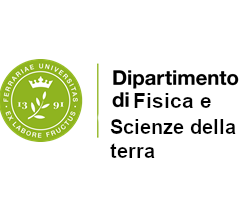Seminario

- https://fst.unife.it/it/eventi/seminario-7
- Seminario
- 2025-04-16T14:30:00+02:00
- 2025-04-16T15:30:00+02:00
- Understanding micro- and nanoplastic dynamics in aquatic ecosystems through nuclear medicine: radiolabelling and imaging (PET) Speaker: Prof. Micheal Duncan Yoho (Ege University, Institute of Nuclear Sciences (Izmir, Turkey))
-
Quando
il 16/04/2025 dalle 14:30 alle 15:30
Aggiungi l'evento al calendario
Aggiungi l'evento a Google Calendar
Il giorno 16 aprile presso la sala riunioni 412 Prof. Micheal Duncan Yoho (Ege University, Institute of Nuclear Sciences (Izmir, Turkey)) terra' un seminario dal titolo
Understanding micro- and nanoplastic dynamics in aquatic ecosystems through nuclear medicine: radiolabelling and imaging (PET)
Abstract
Currently, ten million tons of plastic waste has entered the Earth’s oceans and seas. Plastic waste generation is expected to triple by 2050. These plastics break down in the ocean into smaller micro-sized particles. Increasing amounts of microplastics pose a significant threat to the global food supply. For example, microplastics impair reproduction in oysters and fish, disrupt weight gain, and cause liver disease. Organisms that feed by filtering large volumes of water, such as sardines, anchovies, and mussels, acquire microplastics at higher rates. This is especially relevant to Mediterranean countries, where a significant amount of the seafood diet consists of sardines and anchovies. To predict the future impact on the world seafood supply, realistic and rigorous microplastic uptake and biotoxicity studies are needed. However, the state-of-the-art method of fluorescent dye labeling is criticized due to potential leakage, contamination, low sensitivity, and requiring the use of unrealistic amounts of microplastics.
We will report on efforts to use highly sensitive radiolabeling, common in nuclear medicine, to reduce the amount of microplastics needed in uptake and biotoxicity studies. This is achieved by the low noise present in radiation measurements, large penetration depth of the high-energy signals, and high efficiency. Strong covalent bonding mitigates leakage concerns. Results will be presented from in-vivo studies involving sardines, anchovies, tillapia, and plankton. Quantitative analysis and imaging are conducted non- destructively by pre-clinical positron-emission-tomography (PET). Additionally, destructive analysis is conducted by biodistribution. The associated detection limits will assess method performance.
